While the dragon has historically served as China’s national emblem, in recent decades the panda has also come to serve as a symbol for the country; seemingly docile yet vicious if irritated. Due to farming, deforestation and other developments, the Giant Pandas’ natural habitat has significantly diminished and there are less than ~2000 pandas in the wild and ~200 in captivity.
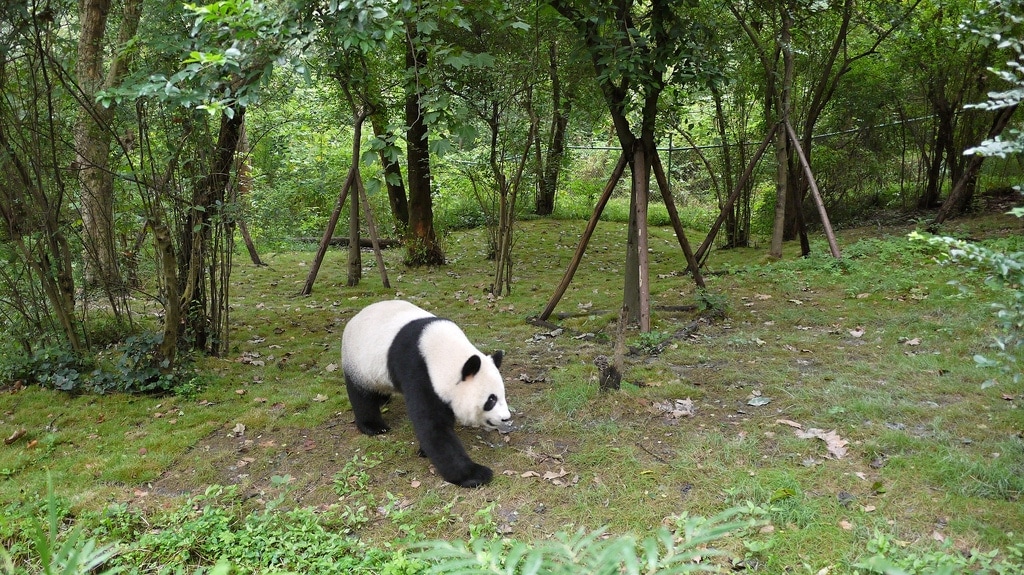
The giant panda lives in a few mountain ranges in central China, mainly in Sichuan province and during my recent trip to the region I got a chance to see some close-up at the mouthful known as the ‘Chengdu Research Base of Giant Panda Breeding‘ (成都大熊猫繁育研究基地) which is a non-profit research facility, conservation education centre, and tourism destination.
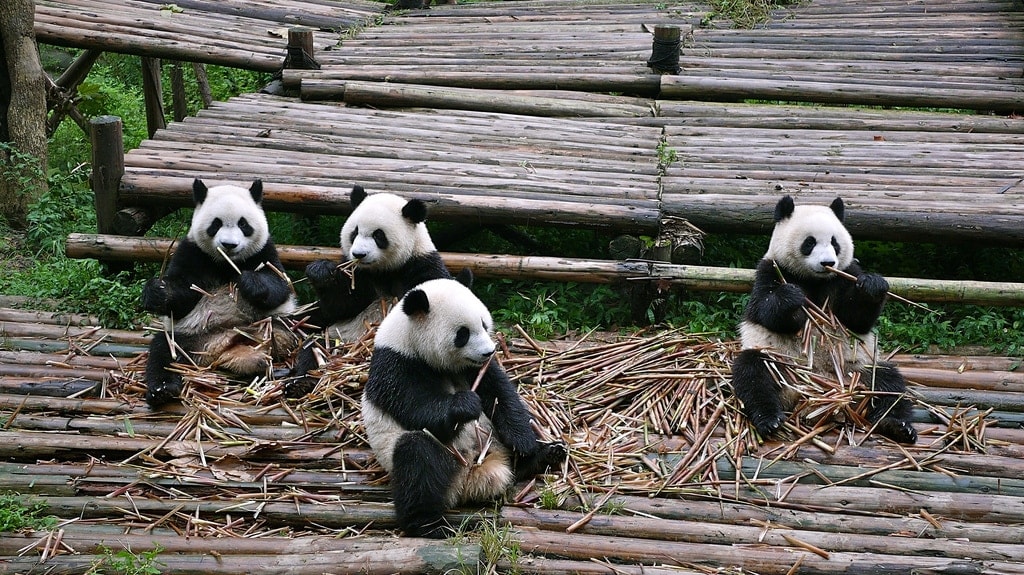
The visit was arranged by the hostel we were staying at (100 RMB per person inc. transport + entrance fee) with the only downside that you had to leave at 7 am in the morning to catch the pandas early during the day when they are most active. Above you can see them having a breakfast of their favourite food; bamboo, which constitutes 99% of their diet.
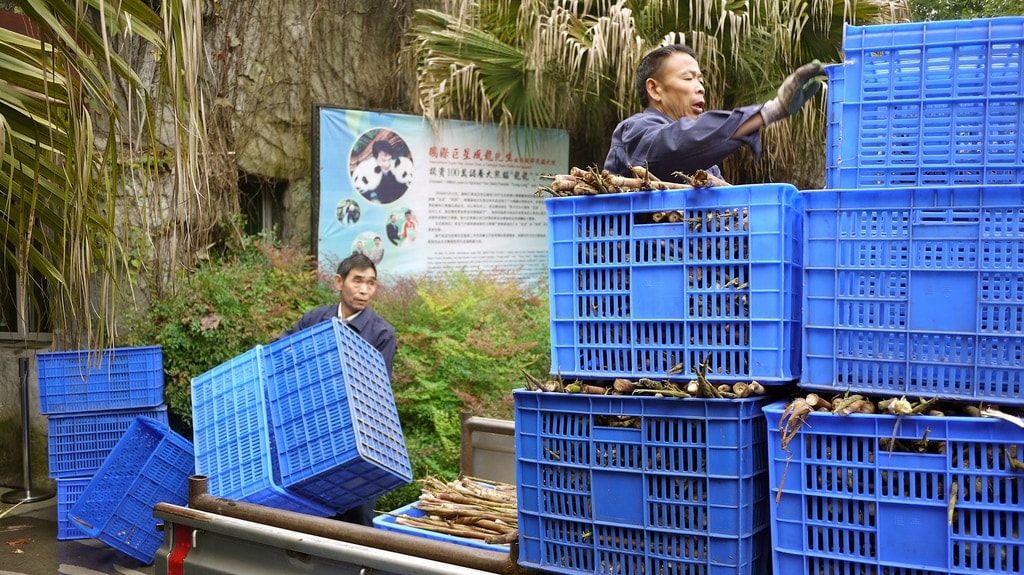
In their natural habitat of mountainous bamboo forests supply is plentifully but here it has to be imported every day. Each panda can consume up to 14kg of the stuff so it’s not a bad business to be in!

Having seen other Chinese zoos in the past where animals were kept in awful conditions I was pleased to find that the Chengdu Panda Base was quite the opposite. Each enclosure was extremely spacious, and well maintained, with plenty of natural vegetation for the pandas to play about in. Above you can see a panda lounging in the top of a tree it had climbed up!
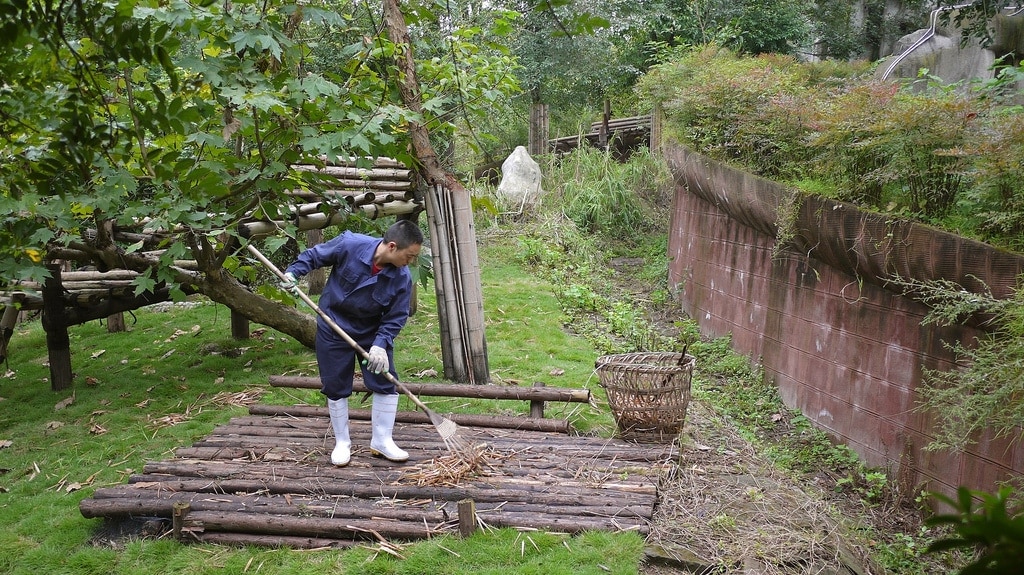
Watching this man clean out a panda pen I wondered for a moment if this wasn’t a scene out of some dystopian future where their animals had taken over and subjugated us as their slaves 😉
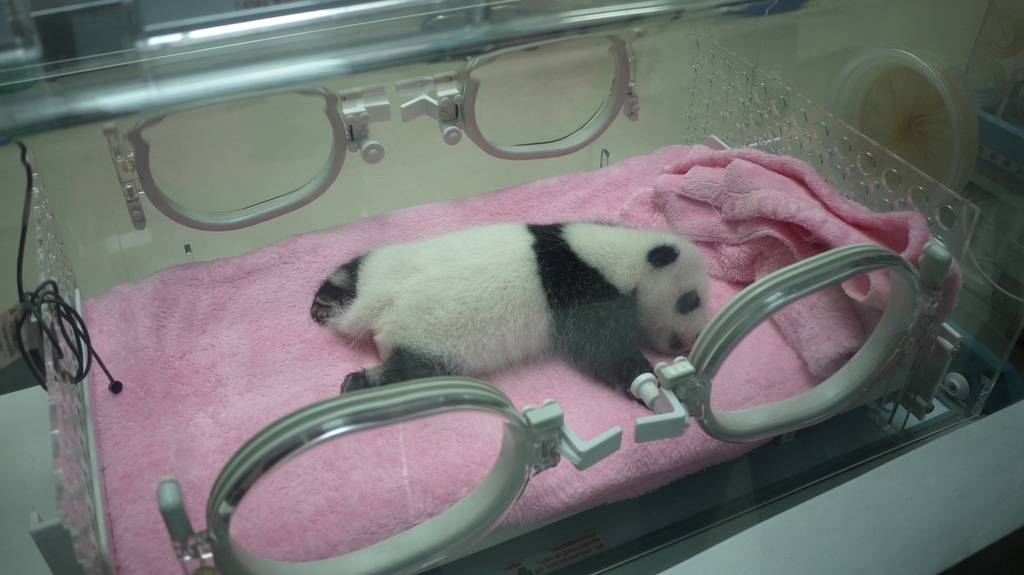
As if giant pandas weren’t already cute enough, their babies are simply adorable. Most of the panda cubs are born around August each year due to the preceding mating season between March and May. They are born tiny (1/900th the size of their mother), pink, blind, and toothless – in the incubators and playpens they have a surprisingly human quality about them.
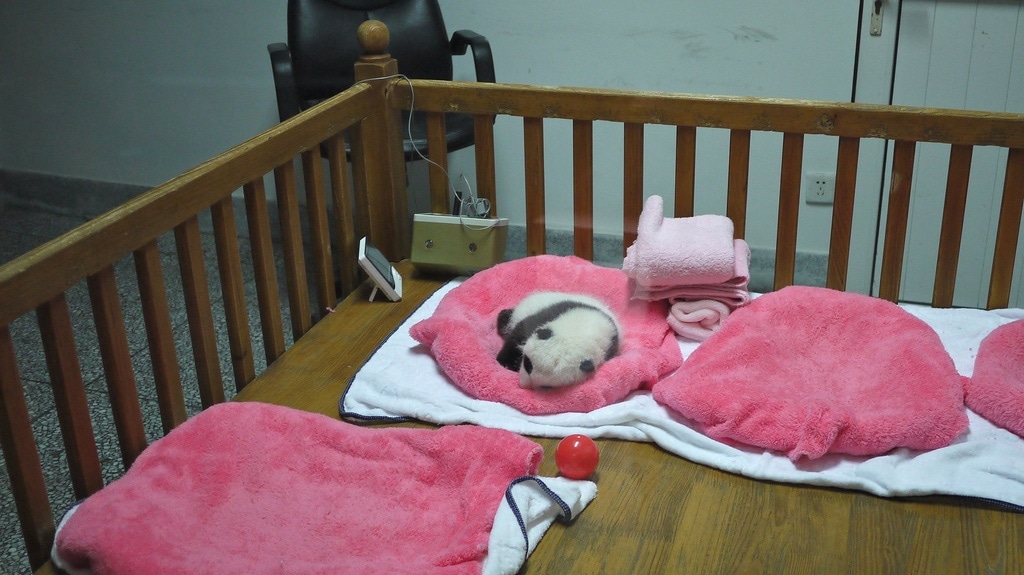
Since scientists and conservationists are keen to continue increasing the population there’s no one-child policy around here. Many of the pandas born in captivity today are conceived artificially which doesn’t come cheap. American zoos generally pay the Chinese government $1 million a year in fees, as part of a multi-year contract.
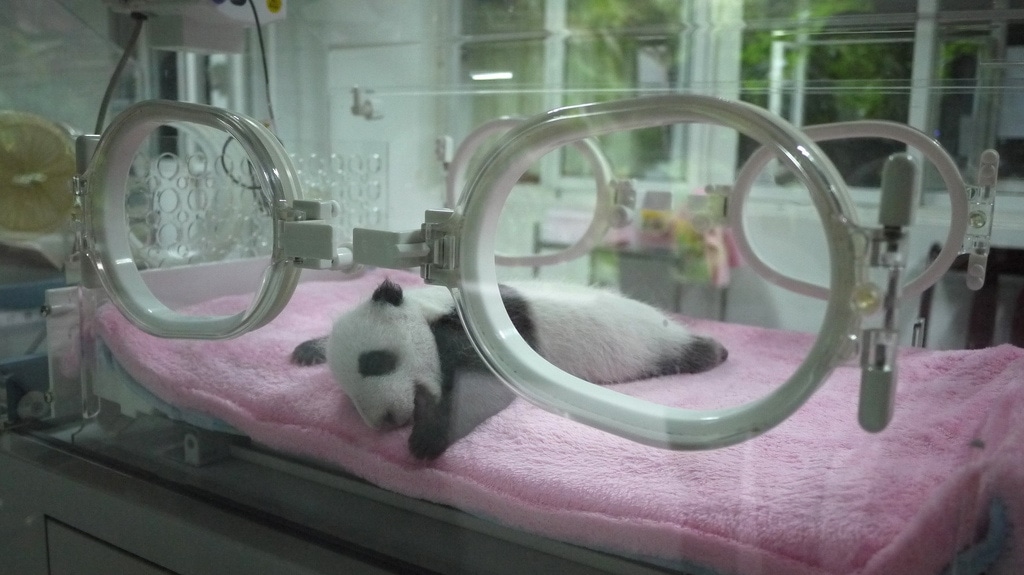
An enviable lifestyle indeed…

Something new I learned that day is that as well as the “giant” black & white variety of panda, there is also a red panda species which is slightly larger than a domestic cat and looks a lot like a fox at a glance. They’re territorial animals and in the video, at the bottom of this post, you can see two getting into a fight.
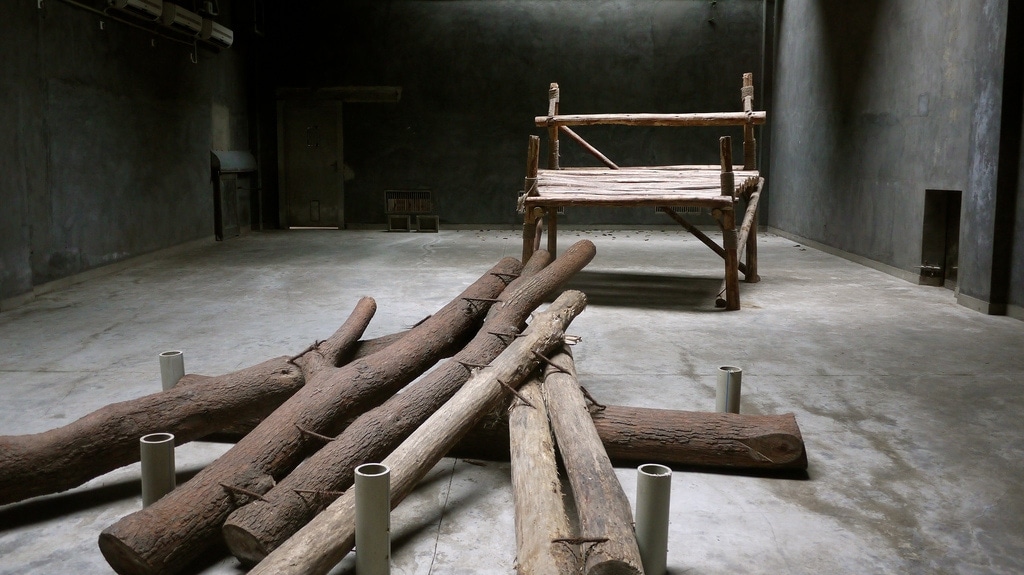
Above is where they sleep at night. Not perhaps the most comfortable bedroom but I appreciate the minimal styling!

The conservation base occupies an area of 100 hectares so you’ll want a full half-day to explore it thoroughly. The central areas tended to be quite crowded with large tour groups but walk a little further and they can easily be escaped.
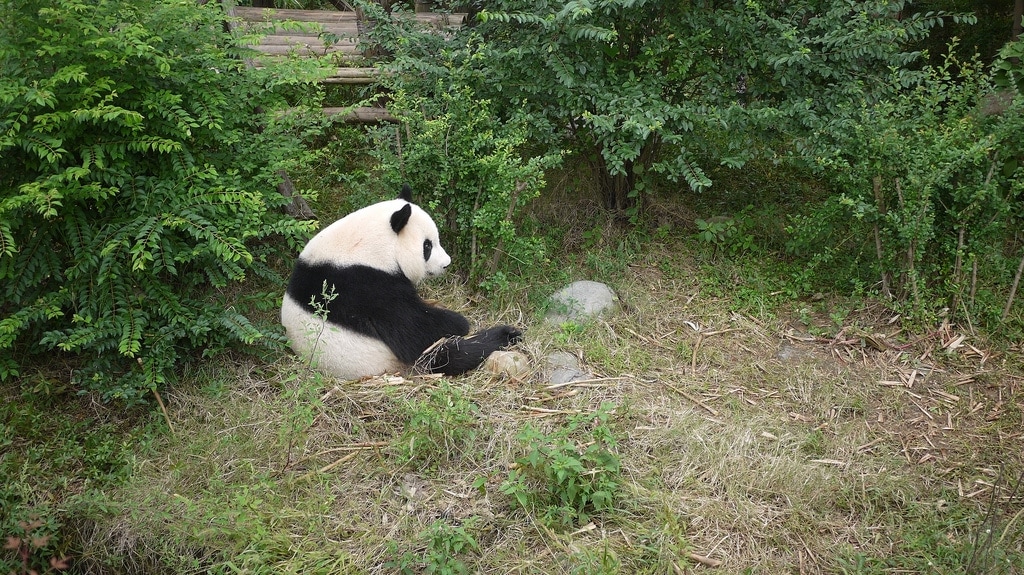
You’d be forgiven for thinking that pandas were lazy creatures given the amount of time they spend sitting around but in fact, their diet of bamboo doesn’t provide them with enough nutrients/energy to be anything else!
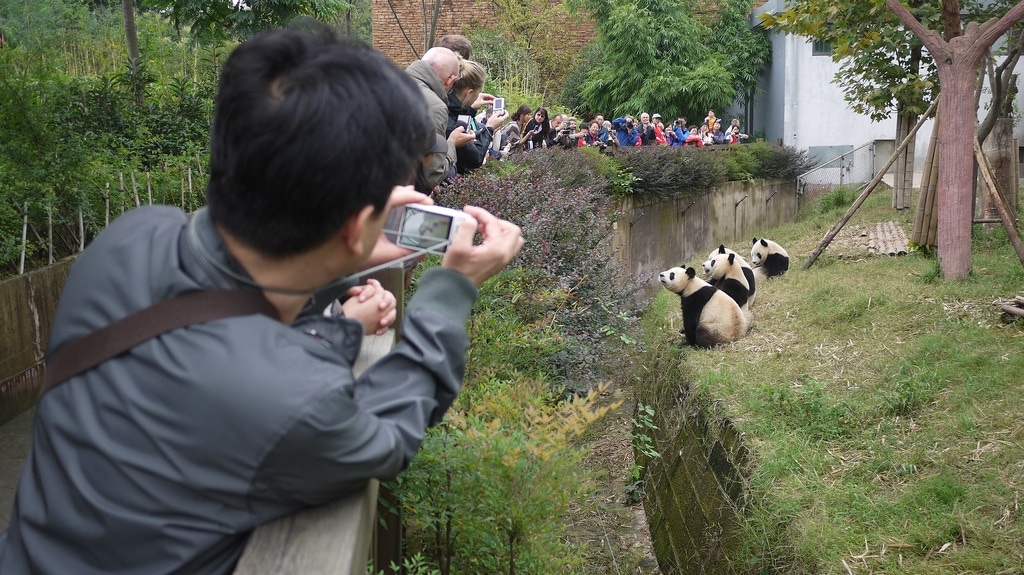
They clearly know when it’s feeding time and wait expectantly on the bank of a moat which surrounds the high enclosure wall.
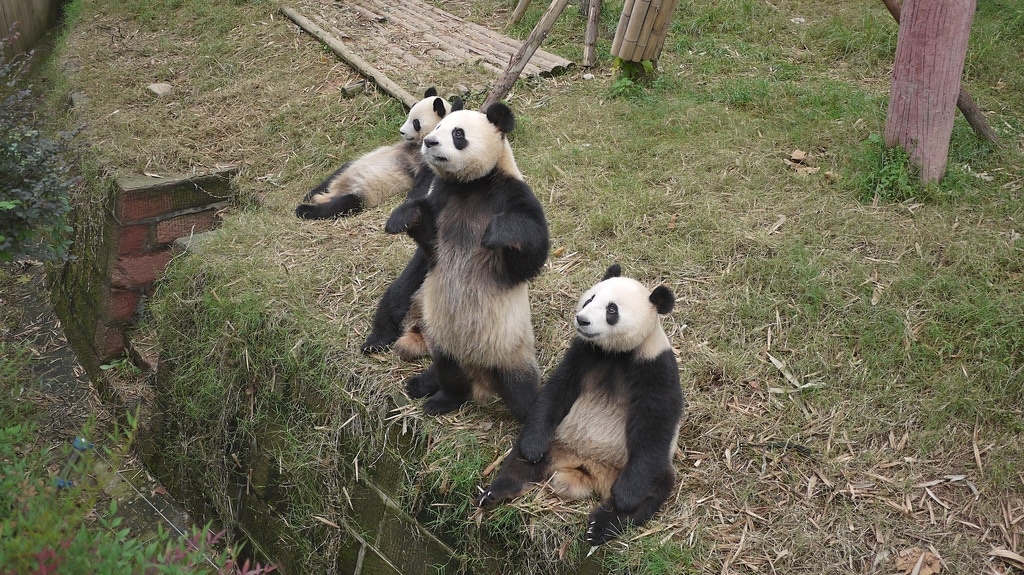
When standing up you can see why it would be a bad idea to pick a fight with one of them. I love the expression of the one in the background – almost like he’s having a lazy afternoon in front of the tv.
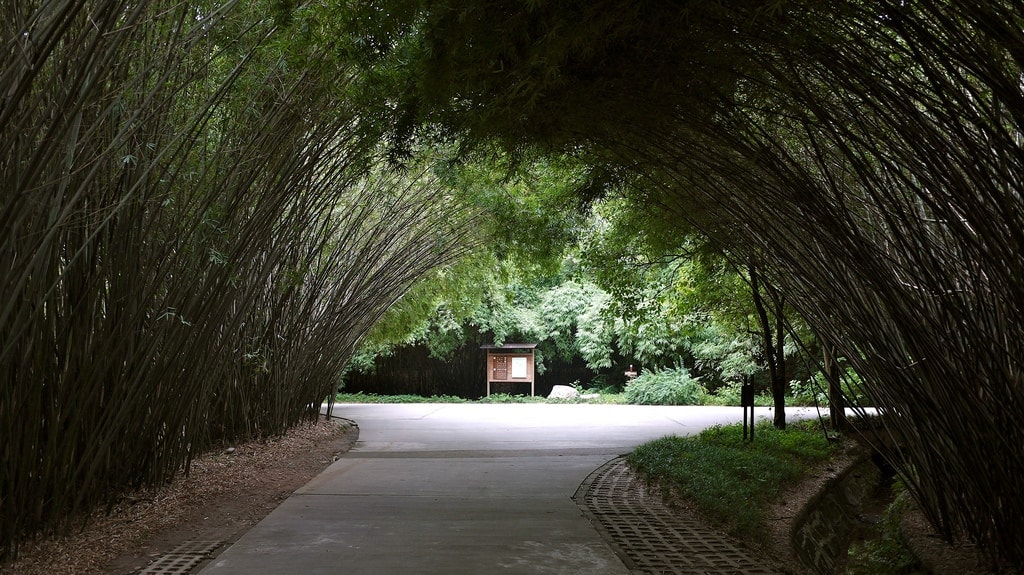
It’s heartening to know that panda numbers are slowly on the rise with positive signs that conservation efforts are working. Threats such as poaching and illegal logging have been significantly reduced and there are now over 40 panda reserves in China.
Check out the video above to see the pandas in action (especially the baby cubs)!

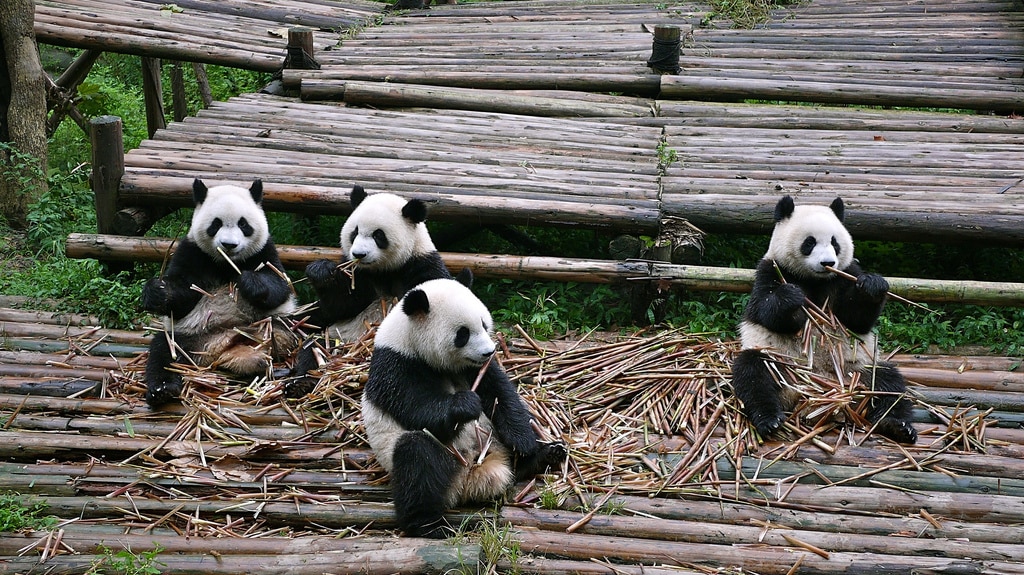
Reply